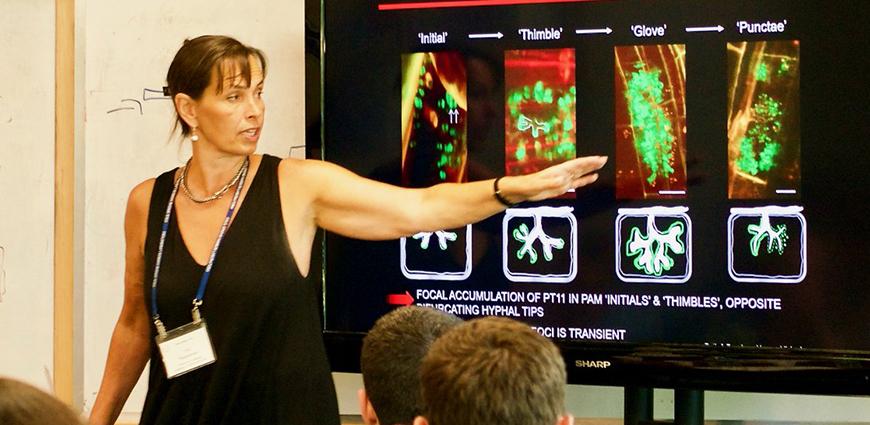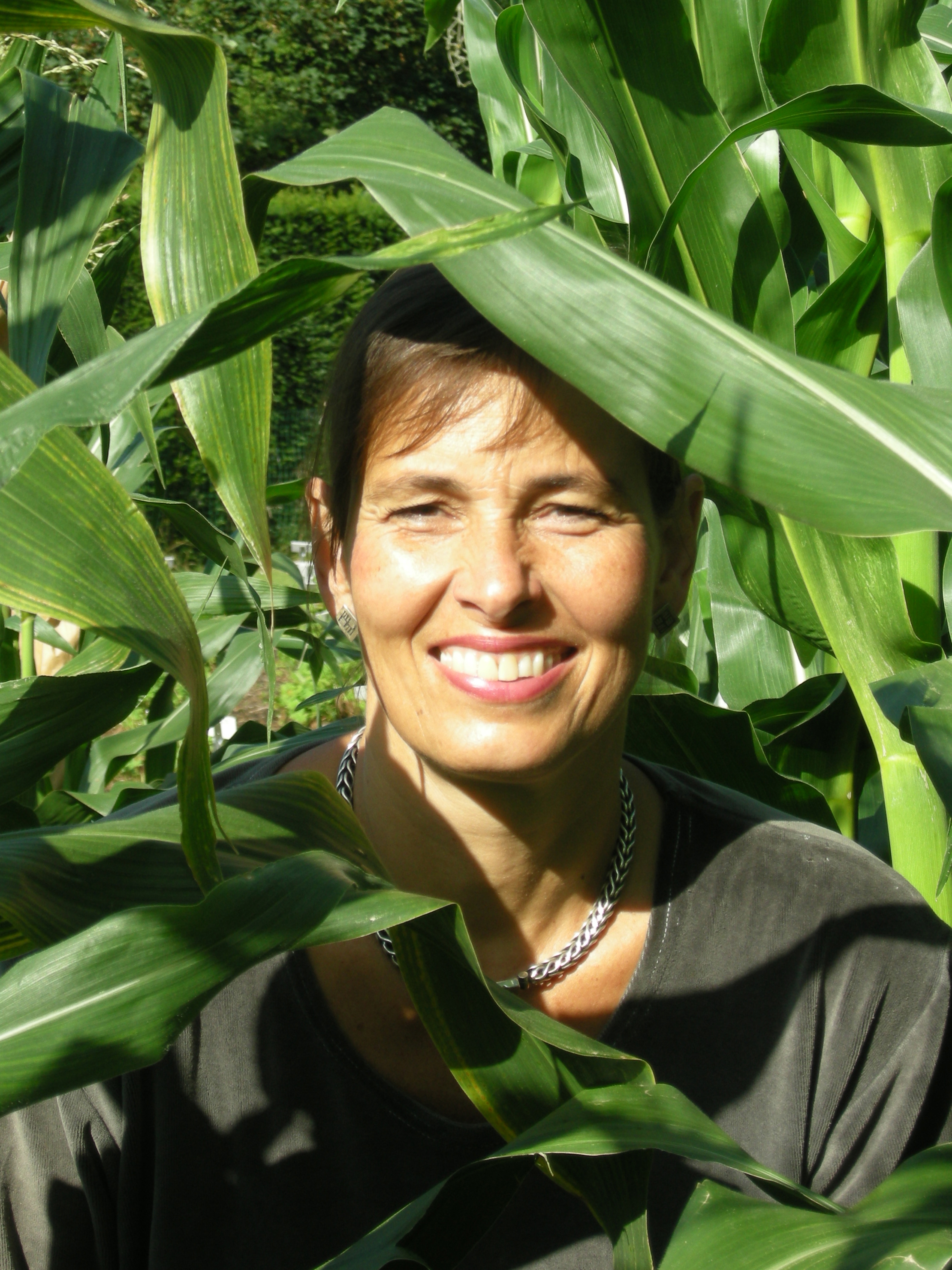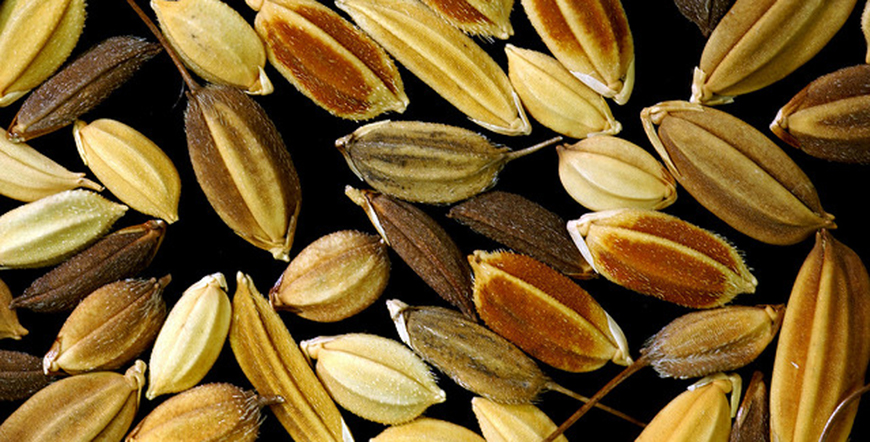
Submitted by Administrator on Tue, 02/10/2018 - 16:45
This scientist loves to talk about communication and intimate physical relationships. But not in humans. She’s been obsessed by plants since a young age, and is now dedicated to understanding symbiosis - the mutually beneficial relationship between plants and fungi.
Uta Paszkowski is based in Cambridge’s Department of Plant Sciences, where she strives to nurture a research group that never loses sight of the bigger picture. Their work could have major consequences for developing more efficient and sustainable agricultural practices around the world.
Q: Where are you from?
A: I’m German; I was born and raised in the Cologne area.
Q: Tell me something about the food there?
A: It’s rather ‘concrete’, like anywhere else in Germany! I grew up on meat, potatoes and vegetables. Traditionally the main carbohydrates are bread and potatoes, and there’s still quite a bit of traditional cuisine around.
Q: Why are you here?
A: I decided when I was about 14 years old that I wanted to work with plants. We had a vegetable garden at home and I much preferred being involved there than inside the house with my mum. I studied Botany and Molecular Biology in Cologne, then through a PhD and a postdoc I worked out I wanted to combine fundamental research with the potential to do something useful. I came to Cambridge six years ago as a Lecturer in the Department of Plant Sciences.
Q: What is your research purpose?
A: I’m Head of the Cereal Symbiosis research group. The symbiosis we study is everywhere and it’s fascinating. It’s an interaction between two different organisms where both benefit. I focus on understanding the communication mechanisms involved in symbiosis of cereal crops including rice and maize. In nature, the majority of plants live in very intimate associations with a fungus, and they feed each other. The fungus sits in the soil, grows into the plant root, proliferates within the root tissue and then forms remarkable tree-like structures inside the plant cells. And the host plant doesn’t kick the fungus out. I’m interested in how the two organisms recognise each other, and ‘talk to’ each other to establish this physical relationship.

Q: Why is this interesting in cereal crops?
A: Through symbiosis the fungus feeds the plant with soil minerals, and actually improves the mineral nutrition of the plant. When rice is grown in paddy fields where there’s continuous flooding, the fungus doesn’t survive long – these conditions don’t permit symbiosis. The poorer smallholder rice farmers can’t afford paddy fields with irrigation, and they can’t afford fertiliser. We see that their rice plants tend to be colonized by fungi, and their contribution to plant nutrition is evident. So symbiosis is making a difference in these low input agricultural systems. The plant probably regulates how much fungus it will accommodate in its roots because it has to feed the fungus, which is a cost. We know that if the plant experiences enough nutrients in the soil it stops the fungus getting into the roots. If it’s deprived of nitrogen and phosphorous then it sends out all sorts of chemical communication signals to call the fungus for help.
Q: How is this relevant to global food security?
A: It takes a long time for the fungus to colonise the plant. My aim is to accelerate colonisation to provide even more nutrients to the plant. To do this we need a better understanding of how the plant and the fungus communicate with each other. The aim is to increase the yield under sustainable conditions. We call this bio-fertilisation, because we’re not adding a new component to the ecosystem. If we could maximise the usefulness of the symbiosis, it would be a very sustainable way to either maintain or even increase crop yields.
Let’s say you have 30 different varieties of maize, all colonised by fungi to same level. Are there specific varieties that show a significantly increased benefit from the interaction? We’ve done experiments in a greenhouse to identify the best performing line, and have pinpointed the parameter that made one variety benefit particularly well from the symbiosis. From there it’s an obvious next step to test this variety in different soils and different climates, and see how robust it is. We’re not creating something new here, this is natural variation and we’re looking for the best variety.
Q: Where are you going?
A: Thanks to the BBSRC I have a new PhD student starting this October who will expand our rice research, working at the International Rice Research Institute (IRRI) in the Philippines. IRRI hosts the largest collection of germplasm for rice in the world. They have produced an amazing resource - they’ve sequenced 3,024 rice varieties - which I don’t think is available for any other crop. This student will spend half of her PhD in the Philippines, looking for variation in fungal colonisation across the rice varieties. Whenever we find any significant variation, we will immediately have the genetic markers for it.

Varieties of rice at IRRI
Q: Do you feel part of something bigger than yourself?
A: I have for a long time, yes. It’s been extremely rewarding to work with IRRI, which is putting so much effort into working towards food security. It’s an impressive institution that’s on a mission to make this world a better place. The submergence-tolerant ‘SUB1’ rice varieties came out of IRRI. This has massively increased yield stability in areas where fields are frequently flooded by monsoons, and previously the farmers suffered from reduced yields.
Q: What’s the one piece of advice you’d give to others?
A: To work out what drives you. You need that drive to keep you going when you get lots of negative results to your research questions. You can be as smart and well-connected as you wish, but nature is extremely inventive and it can take a long time to figure out what’s going on. You need a lot of imagination to ask the right research questions, and you need determination to achieve your goal.
Q: What would make the world a better place?
A: Respect. I don’t think any type of science is about us as individuals. Of course it’s how we make our living, but I get frustrated when people can’t see the bigger picture because they’re too focused on themselves. When scientists evaluate other scientists’ work, for example by reviewing papers or grants, sometimes it’s a challenge to uncouple what they’re doing for their own benefit from what’s for the greater good. You need respect for the advancement of science, and for the colleague who just did an excellent job and beat you to a new discovery.

